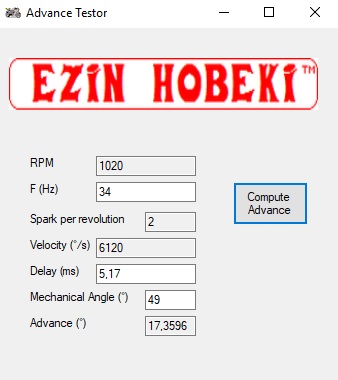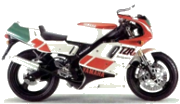Almost solved the problem
Found the problem that I had.
Sadly I destroyed the IC while dong it. (taping a 0V or 5V on the ic pins in the hope that it would work differently)
Was still convinced that it was a safety curve, but turns out that the CDI was working correct.
The problem lies in the lob size,
On the 4DL it is huge
And on my testing machine based on a 3MA they are small
We know that the CDI is firing the thyristor till 33,33hz and it is firing at the back off the lob
Wile the calculated IC uses the front off the lobe and starts after the 33,33Hz
So when the 33,33Hz CDI pulse stops, the IC pulse needs to take over from exactly the point where the CDI Pulse has stopped.
Let me explain
Here you have a small lob. (Can be seen to the small length (gap) between beginning and end)
When the IC is taking over the drop is to small and the IC pulse is still after the back off the lob pulse
To create a longer pulse, extend the lobe from one off the testing machine's
(not my greatest work, but for now it does the job)
Here you have a long lobe (Can be seen to the long length (gap) between beginning and end)
Still firing at the back off the lob, but the IC is controlling the ignition in front off the ''back off the lob pulse''
What does this mean for the ignition curve.
That the measured point we found on the scope are correct
After 33,33Hz the IC pulse is taking over so that needs to be close to 18 degrees
If we take 49 degrees as Mechanical angular I can use Olivier's calculation program to calculate the degrees

Hz RPM Time (ms) Degrees
34 2040 5,17 17,35
40 2400 4,36 17,60
50 3000 3,41 18,31
58,50 3500 2.88 18,67
60 3600 2,81 18,65
60,66 4000 2,55 21,16
83,33 5000 2,08 17,80
100 6000 1,76 17,32
116,66 7000 1,55 16,45
133,33 8000 1,36 16,36
150 9000 1,25 15,25
166,66 10.000 1,15 14,50
175 10.500 1,13 13,40
183,33 11.000 1,10 12,70
Still not what we are looking for, but getting close.
This has probably something to do with the calculations
Will try to solve this to


